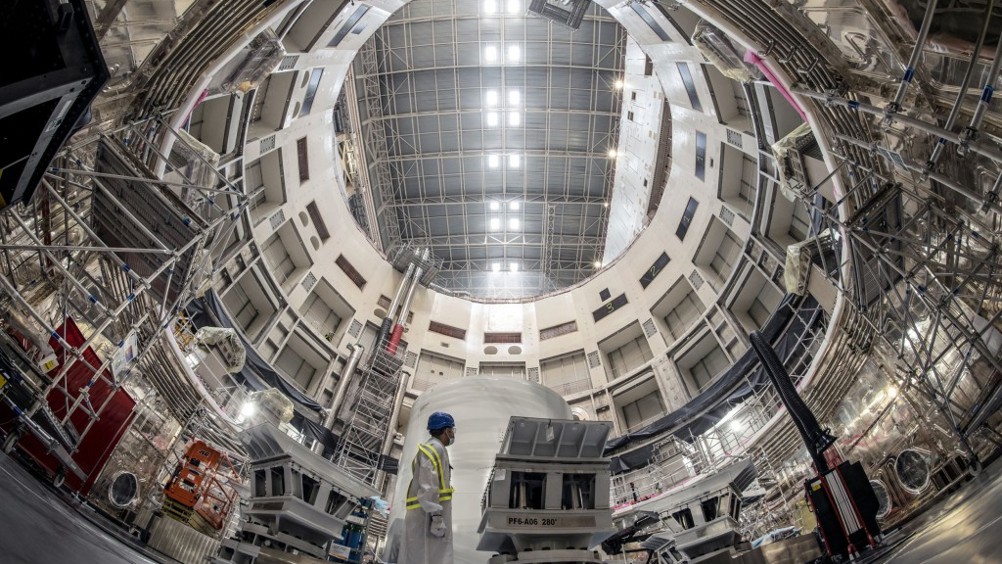ITER completes superconducting fusion magnet system
The world’s largest and most powerful pulsed superconducting electromagnet system has been completed ahead of its installation at the ITER experimental fusion reactor.

ITER is aiming demonstrate the commercial viability of fusion. Once complete, it will use around 300MW of electrical power to cause magnetically confined hydrogen plasma to absorb 50MW of thermal power, creating 500MW of heat from fusion. First conceived in 1985, the multibillion-dollar project is funded and run its seven member parties: China, the EU, India, Japan, Russia, South Korea and the US.
The tokamak reactor’s Central Solenoid will be the system’s most powerful magnet, claimed to be strong enough to lift an aircraft carrier. The sixth and final piece of the Central Solenoid has now been built and tested by the US and is ready for assembly on site at ITER in southern France.
The Central Solenoid will work in tandem with six ring-shaped Poloidal Field (PF) magnets, built and delivered by Russia, Europe, and China. Fully assembled, the pulsed magnet system will weigh nearly 3,000 tons and form the heart of ITER’s tokamak, confining superheated hydrogen plasma that will reach 150 million degrees Celsius. According to ITER, the engineering megaproject involves thousands of scientists and engineers contributing components from hundreds of factories across three continents, all to build a single machine.
Register now to continue reading
Thanks for visiting The Engineer. You’ve now reached your monthly limit of news stories. Register for free to unlock unlimited access to all of our news coverage, as well as premium content including opinion, in-depth features and special reports.
Benefits of registering
-
In-depth insights and coverage of key emerging trends
-
Unrestricted access to special reports throughout the year
-
Daily technology news delivered straight to your inbox










Water Sector Talent Exodus Could Cripple The Sector
Well let´s do a little experiment. My last (10.4.25) half-yearly water/waste water bill from Severn Trent was £98.29. How much does not-for-profit Dŵr...